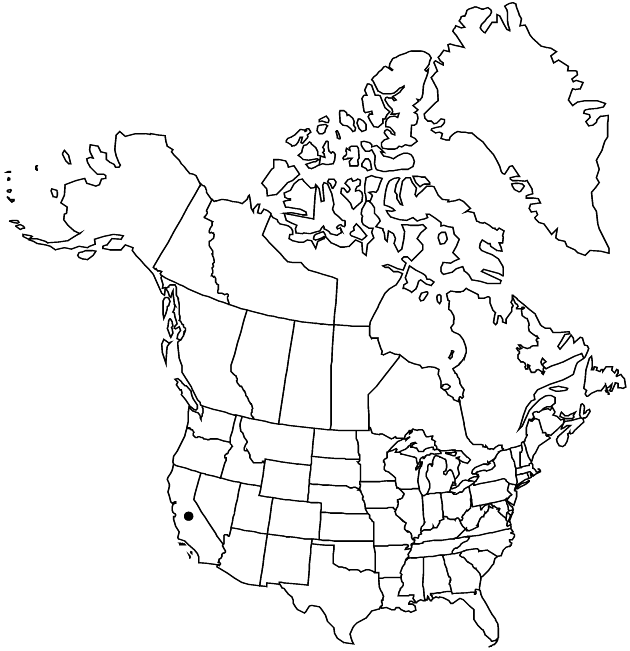Pyrrocoma uniflora var. gossypina
Phytologia 71: 61. 1991.
EndemicConservation concern
Basionym: Pyrrocoma gossypina Greene Pittonia 3: 23. 1896
Synonyms: Haplopappus uniflorus subsp. gossypinus (Greene) H. M. Hall
Plants 10–30 cm. Stems pale or reddish, tufted-tomentose, glabrescent. Leaves: basal blades lanceolate, 20–80 × 10–20 mm, margins entire to rigidly dentate; faces tufted-tomentose. Heads 1–5, usually in racemiform arrays, pedunculate, sometimes borne singly, terminal. Involucres 10–13 × 18–20 mm. Phyllaries loosely appressed, unequal.
Phenology: Flowering Jul–Sep.
Habitat: Dry or moist alkaline meadows, open pine forests
Elevation: 1600–2300 m
Discussion
Of conservation concern.
Variety gossypina is known only from the San Bernardino Mountains, southern California. It is recognized by its tufted-tomentose pubescence, long involucres, unequal phyllaries, and geographic isolation.
Selected References
None.
Lower Taxa
None.
"[" is not declared as a valid unit of measurement for this property."[" is not declared as a valid unit of measurement for this property.
... more about "Pyrrocoma uniflora var. gossypina"
introrse +
connate +
distinct +
herbaceous +
scarious +
green +
distinct +
hirsute +
papillate +
racemiform +
continuous +
1-nerved +
lanceolate +
petiolate +
clasping +
cordate +
3mm;30mm +
lanceolate;linear;oblanceolate or elliptic +
ribbed +
stigmatic +
brownish +
persistent +
15;60 +
unequal +
absent +
lanceolate +
reduced +
sessile +
yellow +
absent +
nerved +
dimorphic +
2mm;4mm +
staminate +
Calif. +
straight +
eglandular +
tufted-tomentose +
distinct +
proximal +
1;5 +
bisexual +
dispersed +
pedunculate +
singly +
indeterminate +
terminal +
1;5 +
surrounding +
hemispheric +
alternate +
erect +
deltate +
2-carpellate +
inferior +
attached +
anatropous +
tawny +
persistent +
tough +
thick +
absent +
connate +
1-nerved +
persistent +
appressed +
distinct +
herbaceous +
falling +
proximal +
linear-lanceolate +
unequal +
equal +
Phytologia +
1991 +
pistillate +
absent +
fertile +
epaleate +
pitted +
convex +
fibrous +
exalbuminous +
modifed +
alternate +
triangular +
2-branched +
glabrous +
Pyrrocoma uniflora var. gossypina +
Pyrrocoma uniflora +
variety +
tubular-funnelform +
equaling +
sessile +
perennial +
